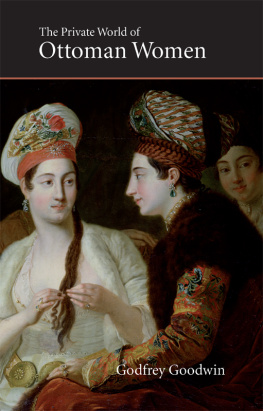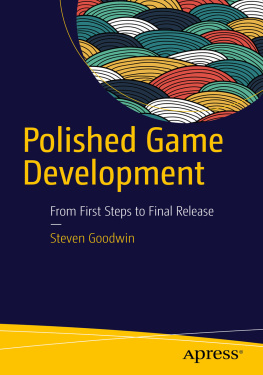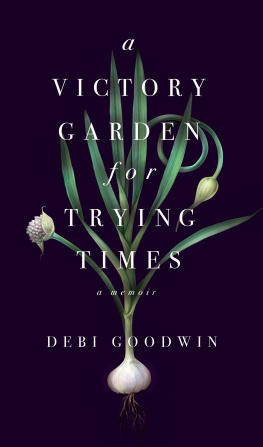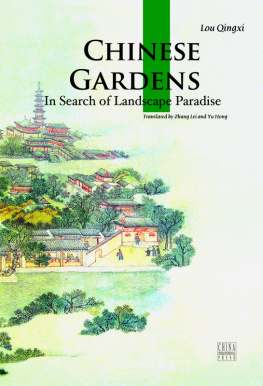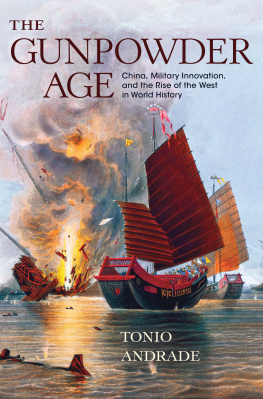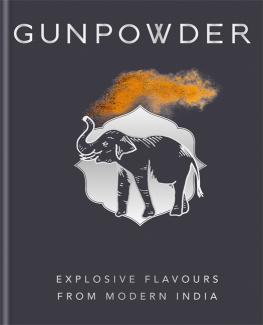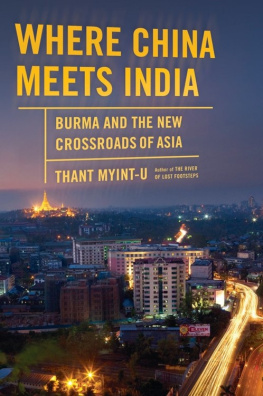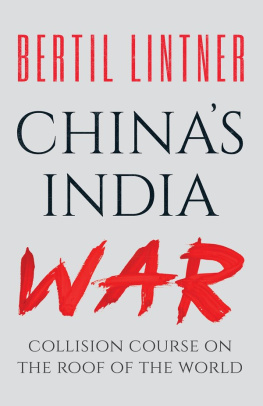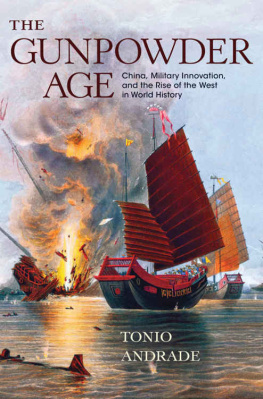Goodwin - The Gunpowder Gardens or, A Time for Tea: Travels Through India and China in Sh of Tea
Here you can read online Goodwin - The Gunpowder Gardens or, A Time for Tea: Travels Through India and China in Sh of Tea full text of the book (entire story) in english for free. Download pdf and epub, get meaning, cover and reviews about this ebook. year: 2013, publisher: Argonaut Books, genre: Detective and thriller. Description of the work, (preface) as well as reviews are available. Best literature library LitArk.com created for fans of good reading and offers a wide selection of genres:
Romance novel
Science fiction
Adventure
Detective
Science
History
Home and family
Prose
Art
Politics
Computer
Non-fiction
Religion
Business
Children
Humor
Choose a favorite category and find really read worthwhile books. Enjoy immersion in the world of imagination, feel the emotions of the characters or learn something new for yourself, make an fascinating discovery.

- Book:The Gunpowder Gardens or, A Time for Tea: Travels Through India and China in Sh of Tea
- Author:
- Publisher:Argonaut Books
- Genre:
- Year:2013
- Rating:5 / 5
- Favourites:Add to favourites
- Your mark:
- 100
- 1
- 2
- 3
- 4
- 5
The Gunpowder Gardens or, A Time for Tea: Travels Through India and China in Sh of Tea: summary, description and annotation
We offer to read an annotation, description, summary or preface (depends on what the author of the book "The Gunpowder Gardens or, A Time for Tea: Travels Through India and China in Sh of Tea" wrote himself). If you haven't found the necessary information about the book — write in the comments, we will try to find it.
The Gunpowder Gardens or, A Time for Tea: Travels Through India and China in Sh of Tea — read online for free the complete book (whole text) full work
Below is the text of the book, divided by pages. System saving the place of the last page read, allows you to conveniently read the book "The Gunpowder Gardens or, A Time for Tea: Travels Through India and China in Sh of Tea" online for free, without having to search again every time where you left off. Put a bookmark, and you can go to the page where you finished reading at any time.
Font size:
Interval:
Bookmark:
Travels through India and China in search of Tea
By
JASON GOODWIN
ARGONAUTBOOKS
TheGunpowder Gardens
first published 1990 byChatto & Windus
Published by Vintage 1993
Published by Penguin Books2003
Published by Argonaut Books2012
Copyright 1990 JasonGoodwin
ISBN 978-0-9572540-1-5
Award-winningauthor Jason Goodwin writes the internationally acclaimed Yashim thrillers setin 19th century Istanbul, translated into over 40 languages. Thefirst, The Janissary Tree, won the coveted annual Edgar Award for Best Novel inthe USA.
TheGunpowder Gardens or, A Time for Tea, was the first book I wrote, Jasonsays. It was a spectacular moment for travel-writing, and the story of tea wasa fascinating subject crying out for coverage. Im proud of the book, whichwith hindsight seems to combine the two strands effortlessly.
Twenty two years later I am still a tea lover. I wake up with tea, Iwork with tea, and I go to bed on it. I have become just like the 18thcenturys Dr Samuel Johnson, who compiled the first English dictionary: ahardened and shameless tea-drinker, who for twenty years diluted his meals withonly the infusion of this fascinating plant ; whose kettle had scarcely time tocool; who with tea amused the evening, with tea solaced the midnight, and withtea welcomed the morning.
Jasonis married with four children and lives in Dorset, England.
www.jasongoodwin.info
http://thebellinicard.wordpress.com/
Other books byJason Goodwin
Travel:
On Foot tothe Golden Horn: A Walk to Istanbul
History:
Lords of theHorizons: A History of the Ottoman Empire
Greenback:The Almighty Dollar and the Invention of America
IstanbulMysteries (available on Kindle):
The JanissaryTree
The SnakeStone
The BelliniCard
An Evil Eye
TABLE OF CONTENTS
The progress of this famous plant hasbeen something like the progress of truth: suspected at first, though verypalatable to those who had courage to taste it; resisted as it encroached;abused as its popularity seemed to spread; and establishing its triumph atlast, in cheering the whole land from the palace to the cottage, only by theslow and resistless effects of time and its own virtues.
Edinburgh Review 1828
Thank God for tea! What would the world do without tea?How did it exist? I am glad I was not born before tea!
Sydney Smith
Who says that tu is bitter? It is as sweet as theshepherds purse.
Confucius, 600 BC
In Chineselegend it is said that when the Worm of Chaos was defeated (a hideous slimything that emerged from the Egg of Creation), peace reigned for many centuriesand Man learned most of his useful ways from the Three Emperors. Cha wasrevealed to the Second Emperor, Shen Nung, Divine Healer, who discovered milletand the curative herbs, the manufacture of the first plough, and tea, which hecame upon in 2737 BC. Untilthen his people drank boiled water with the taste of flat irons, unwillingly.He brought them cha, tea,picked and dried on the third day of the third month. Just as his fathersgifts of fire and husbandry were more essential than his own, so his gift of cha , in Chinese eyes, ranks abovethose of his son the vine, astronomy.
Shen Nung, an emperor with thehead of an ox and the body of a man, died at the end of his -yearreign from eating a poisonous herb.
But today in China you may beoffered cha by the very poor,and it is only boiled water, hot, with the taste of flat irons.
Tea was certainly known anddrunk in the era of the Three Kingdoms (AD2227). Picked first in the wild, by the third century AD tea was being cultivated in the southwestern province of Szechwan; as today,every farmer probably had his patch of tea, and the habit sanctioned bydoctors, who claimed, among other things, that tea was a cure for pooreyesight, and by Taoist priests, who used it as an ingredient in their elixirof immortality spread through the crescent of southern China, and wasknown to connoisseurs in the north. It was under the Tang dynasty, However,that tea-drinking became an art. In the eighth century AD the tea merchants commissioned a book on tea, historys first commercial puff.The man they chose to write it was Lu Yu, a foundling, who had run away from amonastery to become a popular conjurer and acrobat. He devoured the works ofConfucius and Lao-tzu, the Five Books regarded as the storehouse of Chinesewisdom, and before long he produced his commissioned work, the Cha Ching - theTea Classic. It became, in his lifetime, part of the canon of Chineseliterature and learning; the Emperor sought his friendship, disciples flockedto hear him. In 775 Lu Yu became a hermit; twenty-nine years later, he died.
He had written
The bestquality tea must have creases like the leathern boot of Tartar horsemen, curllike the dewlap of a mighty bullock, unfold like a mist rising out of a ravine,gleam like a lake touched by a zephyr, and be wet and soft like fine earthnewly swept by rain...
Thereis ordinary and ground tea. What is called cake tea is put in a bottle or jarafter being pounded, and the boiling water is poured over it. Sometimes onion,ginger, jujube, orange peel and peppermint are used, and it is left to boil forsome time before the froth is skimmed. Alas! this is the slop-water of a ditch.
Cha was soon to be taken into the Himalayas over the passes between China andTibet, and along the northern caravan routes, particularly the famous Silk Roadthrough Mongolia and Turkestan. Nomads on the Chinese borders developed such acraving for cha that it becamea useful weapon in Chinas diplomatic armoury, more efficient than the GreatWall. The quality of the tea the nomads received was atrocious but asthey prepared it like the slop-water of a ditch it probably made no difference.It was brick tea, made of compressed coarse leaves, twigs, adulterants and whatnot (in a diet that consisted mainly of meat and milk it supplied the want ofgreen vegetables), and Tibetans churned it as they still do with sour yak milk, butter, salt and spice to make a nourishing tea soup. ACaptain Turner drank it in Tibet in the eighteenth century: We found thisliquor extremely unlike what we had been used to drink under the same name, hewrote; it was a compound of water, flour, butter, salt, and Bohea tea, withsome other astringent ingredients, all boiled, beat up, and intimately blendedtogether. I confess the mixture was by no means to my taste
Later he changed his mind.Habit had not only rendered this composition agreeable to our tastes, but Iwas never more disposed to praise the comfortable practice of the country,having observed that the first object of attention with every man at the end ofa long journey is to procure himself a dish of hot tea. The name of the drinkbeyond the borders of the Empire was cbai in Tartar Russia and in India, cba in Afghanistan and Persia, cba throughout the Arab world, where centuries later Tommy Atkins - alwaysscavenging for argot picked up the word and took it home.
While the Tang dynasty had boiled tea,transported as a cake, the Sung adopted whipped tea, shaved from a hard tabletof compressed powder. Their tastes were, naturally, a great deal more refinedthan those of the outer barbarians. Special teas were plucked in imperialenclosures in southern China, and sent north as tribute to the emperor. Reverencefor the tea arts was so great that generals were known to seek their reward inthis fine tea rather than in land.
The importance of tea reachedits zenith under the Sung Emperor Kiasung (110124), who was a greatfailure as an emperor but an important patron of the tea industry. He heldtournaments at which courtly exquisites vied to identify different types oftea, a practice that remained common in China and Japan for centuries. Kiasunghad 3912 beautiful women in his palace, but he succumbed to the charms of thefamous courtesan Li Shi Shi, causing great scandal by settling a non-virgin inthe palace. A while later he turned his palace into a department store andstaffed it with his harem. His devotion to these amusing reforms, along withthe heavy task of writing a
Font size:
Interval:
Bookmark:
Similar books «The Gunpowder Gardens or, A Time for Tea: Travels Through India and China in Sh of Tea»
Look at similar books to The Gunpowder Gardens or, A Time for Tea: Travels Through India and China in Sh of Tea. We have selected literature similar in name and meaning in the hope of providing readers with more options to find new, interesting, not yet read works.
Discussion, reviews of the book The Gunpowder Gardens or, A Time for Tea: Travels Through India and China in Sh of Tea and just readers' own opinions. Leave your comments, write what you think about the work, its meaning or the main characters. Specify what exactly you liked and what you didn't like, and why you think so.

![Goodwin - Fatal colours : the battle of Towton, 1461 ; [Englands most brutal battle]](/uploads/posts/book/98484/thumbs/goodwin-fatal-colours-the-battle-of-towton.jpg)

